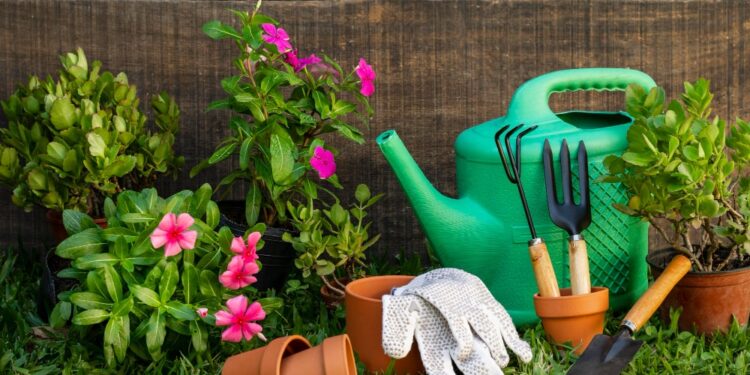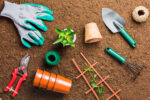How to Start a Home Garden: A Guide for Beginners

Are you tired of buying fruits and vegetables that are not fresh and full of chemicals? Do you want a steady supply of fresh produce at your doorstep? Then starting a home garden is the perfect solution for you. Not only will it give you access to fresh and organic produce, but it is also a rewarding and relaxing hobby.
Starting a home garden may seem daunting at first, but anyone can do it with the right information and guidance. Now, do I start a home garden? Well, worry not; this comprehensive guide will provide you with all the necessary steps to start a successful home garden.
Related Reading: 7 Secrets to Successful Urban Gardening
How to Start a Home Garden
Step 1: Choose the Right Location
The first step to starting a home garden is choosing the right location. You need to select a spot with plenty of sunlight and good soil. Most plants require at least 6-8 hours of direct sunlight, so make sure the location you choose meets this requirement.
In addition to sunlight, having well-drained soil for your garden is important. If your soil is too compact or needs better drainage, it can hinder plant growth. You can test your soil’s pH level using a home testing kit and add necessary amendments.
If you don’t have a suitable outdoor space for gardening, don’t worry! You can still start a small indoor garden using containers or hanging baskets.
Step 2: Decide What to Grow
Next, you need to decide what you want to grow in your home garden. Consider the climate, space, and time you have available for gardening. It is best to start small and focus on a few types of plants that will thrive in your area.
Some popular options for home gardens include herbs, vegetables, fruits, and flowers. Research which plants are best suited for your location and how to care for them.
Read More: Top 6 Essential Medicinal Plants for Home Use
Step 3: Gather Supplies
Once you have chosen the location and plants, it’s time to gather supplies. Here are a few must-haves you’ll want to grab:
- Gardening tools such as a trowel, rake, and spade
- Seeds or seedlings of your chosen plants
- Containers or pots (if you’re starting an indoor garden)
- Good quality soil or compost
- Fertilizer
- Watering can or hose
These are just the basic supplies, but as you gain experience, you may want to invest in more tools and equipment.
Step 4: Prepare the Soil
Now that you have all the necessary supplies, it’s time to prepare the soil. Remove any debris or rocks and loosen the soil to allow for better drainage. Mixing in some compost or organic matter to improve soil quality is also a good idea.
For example, if you’re growing vegetables, add a layer of compost or organic fertilizer to promote healthy growth. Mix in some peat moss to improve texture and drainage if you’re growing flowers.
When preparing the soil, make sure to follow the instructions for your specific plants. Like people, each plant has different needs and preferences.
Step 5: Planting and Care
Once the soil is prepared, it’s the perfect moment to begin planting. Check the seed packets or plant tags for the right spacing and depth. Make sure to water your plants immediately after planting, and continue to water as needed.
Apart from regular watering, you will also need to fertilize your plants periodically. Most plants benefit from a fertilizer application every 2-3 weeks. Remember to remove any weeds that may sprout up in your garden.
Also, watch out for pests and diseases that can harm your plants. Use natural methods like neem oil or companion planting to control pests and avoid using harmful chemicals.
Step 6: Maintenance and Harvesting
Maintaining a home garden requires regular attention and care. Make sure to weed, water, fertilize, and prune your plants as needed. Regularly check for any signs of pests or diseases and take necessary precautions.
As your plants grow, you may also need to provide support through stakes or trellises. This is especially important for taller plants like tomatoes and beans.
The most exciting part of having a home garden is harvesting your own fresh produce. Depending on the types of plants you have chosen, you can expect to start harvesting in a few weeks to a few months. Make sure to pick fruits and vegetables when they are ripe for the best flavor.
Step 7: Enjoy and Experiment
Starting a home garden is not just about growing plants but also about learning and experimenting. Feel free to try new plants or techniques, and don’t worry if you make mistakes along the way. Gardening is a trial-and-error process, and each season will bring new challenges and successes.
Take time to enjoy your garden and all the benefits it offers. You can also share your produce with friends and family or start a small business selling excess produce.
Helpful Tips for Beginner Gardeners
- Begin with a small garden and progressively expand it as you gain more experience.
- Feel free to seek guidance or advice from seasoned gardeners.
- Research and understand the needs of different plants before planting them.
- Maintain a gardening journal to document your progress and learn from any mistakes.
- Consider using organic methods and materials for a healthier and more sustainable garden.
Conclusion
Starting a home garden may seem intimidating, but with these steps, you can quickly begin your journey towards growing fresh and healthy produce. Gardening is not just a rewarding hobby; it also promotes mental well-being, physical activity, and environmental sustainability. So why wait? Grab your gardening tools and start your home garden today.
FAQs
How much sunlight do plants need?
Most plants need a minimum of 6 to 8 hours of direct sunlight.
What should I grow in my home garden?
Consider the climate, space, and your preferences when deciding what to grow. Popular options include herbs, vegetables, fruits, and flowers.
Do I need an ample outdoor space for gardening?
No, you can start a small indoor garden using containers or hanging baskets.
What supplies do I need for a home garden?
Basic supplies include gardening tools, seeds or seedlings, good quality soil or compost, fertilizer, and watering equipment.
How often should I water my plants?
Watering needs vary depending on the type of plant, but most require regular watering when the top inch of soil is dry.
Can I use chemicals in my garden?
It is best to avoid harmful chemicals and opt for natural methods like neem oil or companion planting to control pests and diseases.
What if I make a mistake while gardening?
Gardening is a trial-and-error process, so don’t worry if you make mistakes. Learn from them and continue to experiment and improve. So, you should be okay with a mistake.






